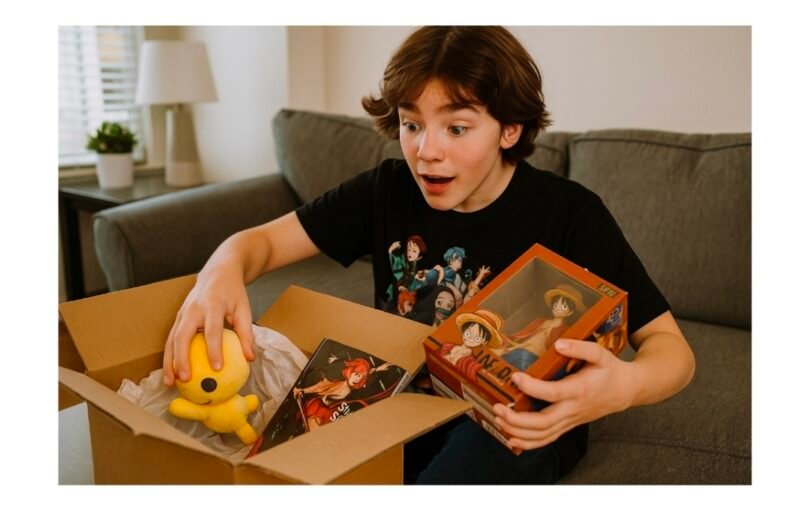There’s something almost magical about how a simple printed manga transforms into a whole universe of collectible treasures. From detailed figures to cozy hoodies, manga-related merchandise has become a core part of fan culture worldwide. Whether you’re a curious newcomer or a long-time otaku, understanding what merchandise sells the most helps you make smarter purchases or find the perfect gift for a fellow fan. In this article, we’re pulling back the curtain on the best-selling items, what makes them popular, and how fans are using them to express their love for anime and manga. Let’s dive deep into a colorful world where passion takes shape through real, tangible objects.
Why do manga fans love collecting merchandise?
Merchandise isn’t just stuff it’s an extension of fandom. For many manga lovers, owning merchandise brings them closer to the characters, stories, and emotions they experience while reading or watching anime adaptations. Imagine walking into your room and seeing your favorite Naruto figures displayed proudly on a shelf it’s like holding a piece of that universe in your hands. Fans often start collecting to show support for a series or character, but it goes beyond that. It becomes a form of personal expression, creativity, and even nostalgia. Some display collections like art galleries, while others use functional merch like mugs, clothes, or backpacks in daily life.
What makes merchandise even more exciting is the emotional connection. It’s one thing to enjoy a manga volume; it’s another to wear a hoodie from your favorite series or to gift a rare figure to someone who truly gets it. The sense of belonging to a global fan community also fuels the demand for popular and limited-edition merch. For newer fans especially, merch helps you explore your taste in anime and manga. You might start with a keychain or T-shirt and end up curating a detailed figure collection. Each item tells a story, whether it’s your favorite arc, character evolution, or a piece that reminds you of when you first discovered anime.
Which manga merchandise sells the most?
If you’re browsing through an anime figures store like anime figures store, you’ll quickly notice which types of merchandise dominate the sales charts. The most popular manga-themed items fall into several major categories, each with its own appeal and market demand.
1. Action figures and collectible statues
These are at the top of the list no surprise there. From affordable mass-produced figures to intricate resin statues that cost hundreds of dollars, manga character figures are in high demand. Series like Demon Slayer, One Piece, and My Hero Academia see consistent sales in this category. High-end figures often feature dynamic poses, weapon details, and premium materials. For collectors, they’re more than toys they’re investments and art pieces. The more limited the release, the faster it sells out.
2. Apparel and fashion items
Anime fashion is huge, especially among younger fans. T-shirts, hoodies, jackets, and socks adorned with favorite characters or logos let fans represent their love subtly or boldly. Brands now collaborate directly with anime studios to produce licensed apparel that’s both stylish and fan-approved.
3. Accessories and lifestyle items
These include keychains, mugs, phone cases, and more. They’re budget-friendly and make perfect gifts. Items like anime keychains for backpacks or mugs with iconic quotes often become best-sellers due to their accessibility and practical use.
4. Posters and wall art
Wall scrolls, canvas prints, and limited-edition posters let fans decorate their personal spaces. Many prefer official art or minimalist designs that complement room aesthetics.
5. Plush toys and stuffed characters
Especially popular for series with “kawaii” (cute) characters, plushies are not just for kids. They’re cuddle-worthy collectibles that add charm to any space.
How to spot authentic manga merch from bootlegs
With popularity comes imitation. Unfortunately, the manga merchandise market is full of counterfeit products that often sell for lower prices but fall apart quickly or feature poor design quality. Recognizing officially licensed merchandise is crucial, especially if you’re investing in higher-priced items.
Look for these signs of authenticity:
- Official branding and logos on packaging
- Quality printing and material (not blurry or cheap)
- Holographic stickers from licensors (e.g., Bandai, Funimation)
- Reputable online stores and vendor reviews
- Limited edition markings or certificates of authenticity
Reputable stores often partner directly with distributors, ensuring quality control and genuine items. If a deal looks too good to be true say, a $150 figure going for $20 it probably is. Another tip? Check for community reviews or unboxings on YouTube and Reddit. These can help you compare your item to known originals. A good rule of thumb: trust your gut and stick with trusted sellers.
Are limited edition manga items worth it?
Limited edition items hold special value, not just because they’re rare, but because they often celebrate milestones anniversaries, special arcs, or crossover events. For fans, owning such items feels like capturing a moment in manga history. Some limited releases appreciate in value, especially if they’re part of a smaller run or tied to a major event. Collectors track release dates months in advance and pre-order items to ensure they don’t miss out.
Yet value isn’t always financial. A signed manga volume or an exclusive con-only T-shirt may hold deep personal meaning. Limited merch often includes premium packaging, extra items (like keychains or art prints), or bonus manga content. Before buying, ask yourself:
- Is it something you’ll treasure long-term?
- Does it connect to a series or moment you deeply love?
- Will its uniqueness matter more than its resale value?
If yes, then it’s probably worth every penny and more.
How do fans organize and display their merch?
Turning a pile of anime goods into a clean, visually stunning collection is part of the fun. Fans get creative with how they display their merch some go minimalist, others turn their rooms into full-blown manga museums.
Popular ways to display manga merch:
Clear acrylic shelves or cases are great for figures. They protect from dust and let light highlight details. Posters and wall scrolls go well in reading nooks or near desks. Apparel gets folded neatly or hung for aesthetics, especially if it features special art prints. You can also rotate your collection depending on the season or mood. For example, showcasing Bleach in October or Sailor Moon in spring adds a playful dynamic. Fans even build shrines dedicated to one character or show, complete with candles, plushies, and themed lighting. Ultimately, there’s no one-size-fits-all method. Whether you own three figures or thirty, the way you display them should reflect your unique style and passion.
A final word on choosing manga merch
Choosing the right manga merchandise isn’t just about trends it’s about emotion, identity, and connection. The best-selling items speak to fans across generations, but it’s your personal connection that gives value to each piece. Whether you’re buying for yourself or someone else, always ask: does this reflect my passion? If it does, you’re not just buying a product you’re collecting a story.






